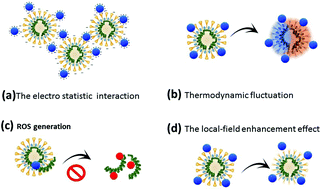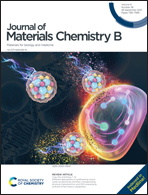Nanoscience and quantum science-led biocidal and antiviral strategies
Abstract
The severe acute respiratory syndrome coronavirus (SARS-CoV-2) caused the COVID-19 pandemic. According to the World Health Organization, this pandemic continues to be a serious threat to public health due to the worldwide spread of variants and their higher rate of transmissibility. A range of measures are necessary to slow the pandemic and save lives, which include constant evaluation and the careful adjustment of public-health responses augmented by medical treatments, vaccines and protective gear. It is hypothesized that nanostructured particulates underpinned by nanoscience and quantum science yield high-performing antiviral strategies, which can be applied in preventive, diagnostic, and therapeutic applications such as face masks, respirators, COVID test kits, vaccines, and drugs. This review is aimed at providing comprehensive and cohesive perspectives on various nanostructures that are suited to intensifying and amplifying the effectiveness of antiviral strategies. Growing scientific literature over the past eighteen months indicates that quantum dots, iron oxide, silicon oxide, polymeric and metallic nanoparticles have been employed in COVID-19 diagnostic assays, vaccines, and personal protective equipment (PPE). Quantum dots have displayed their suitability as more sensitive imaging probes in diagnostics and prognostics, and as controlled drug-release carriers that target the virus. Nanoscience and quantum science have assisted the design of advanced vaccine delivery since nanostructured materials are suited for antigen delivery, as mimics of viral structures and as adjuvants. Furthermore, the quantum science- and nanoscience-supported tailored functionalization of nanostructured materials offers insight and pathways to deal with future pandemics. This review seeks to illustrate several examples, and to explain the underpinning quantum science and nanoscience phenomena, which include wave functions, electrostatic interactions, van der Waals forces, thermal and electrodynamic fluctuations, dispersion forces, local field-enhancement effects, and the generation of reactive oxygen species (ROS). This review discusses how nanostructured materials are helpful in the detection, prevention, and treatment of the SARS-CoV-2 infection, other known viral infection diseases, and future pandemics.

- This article is part of the themed collection: Journal of Materials Chemistry B Recent Review Articles


 Please wait while we load your content...
Please wait while we load your content...